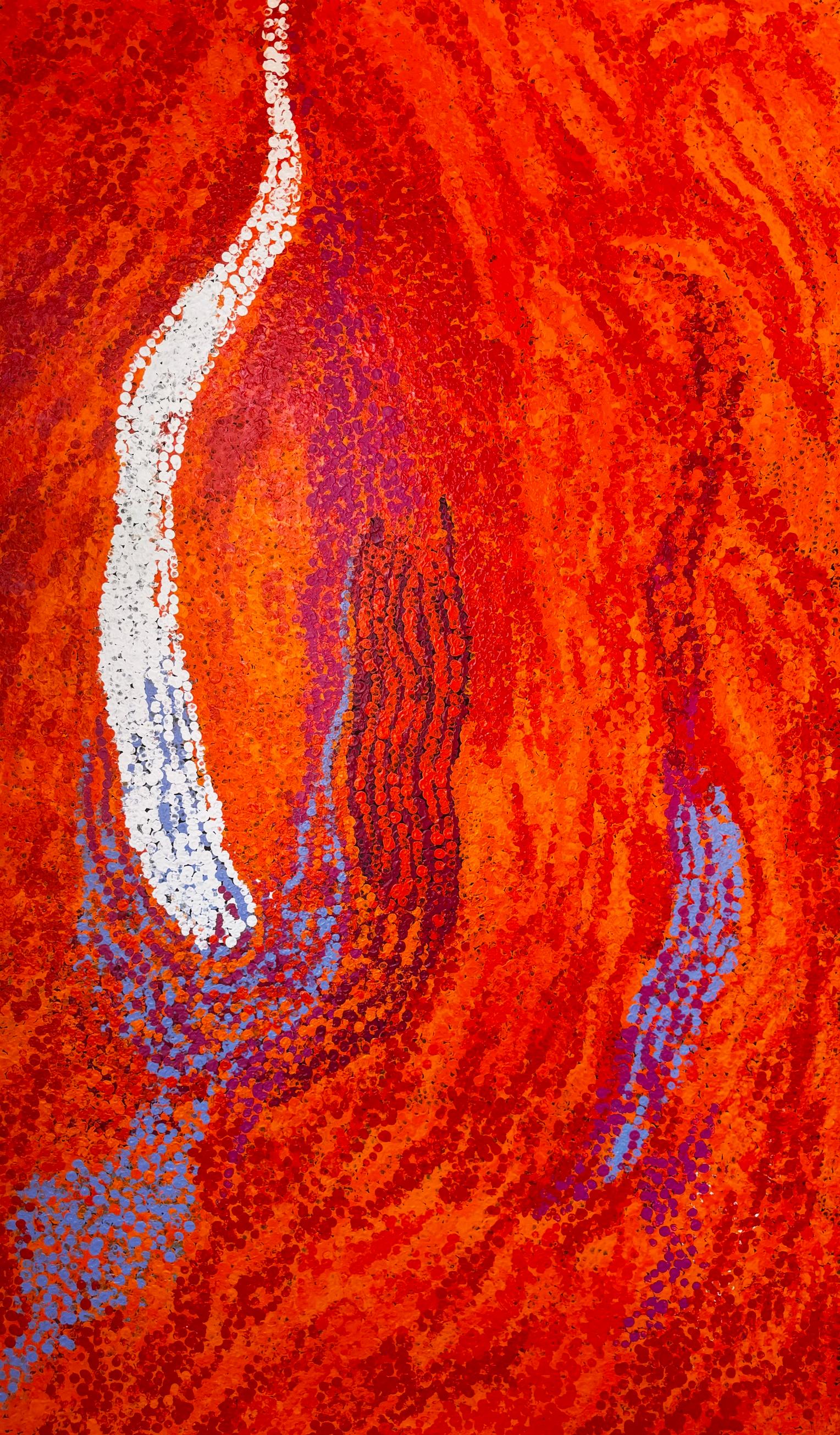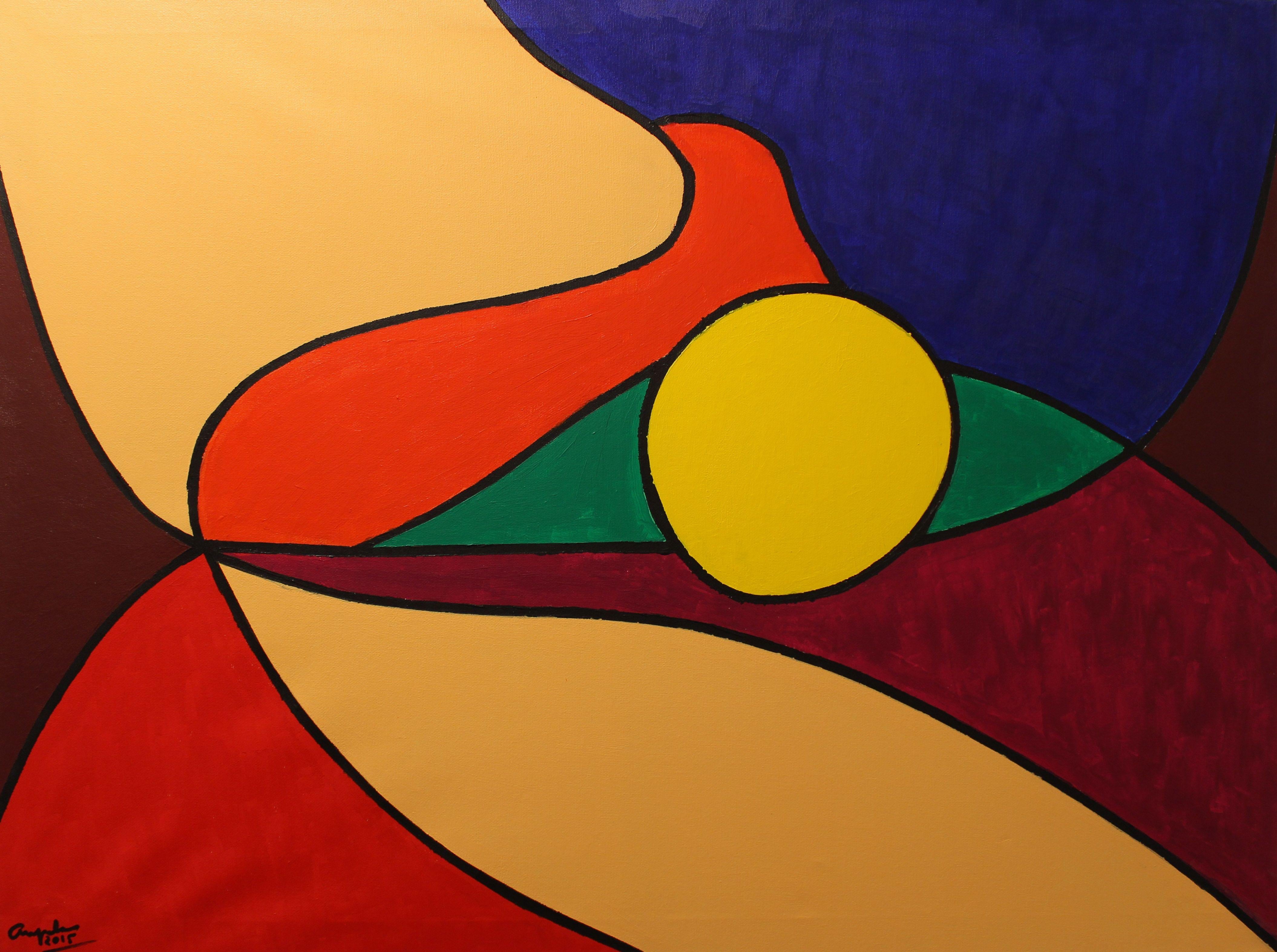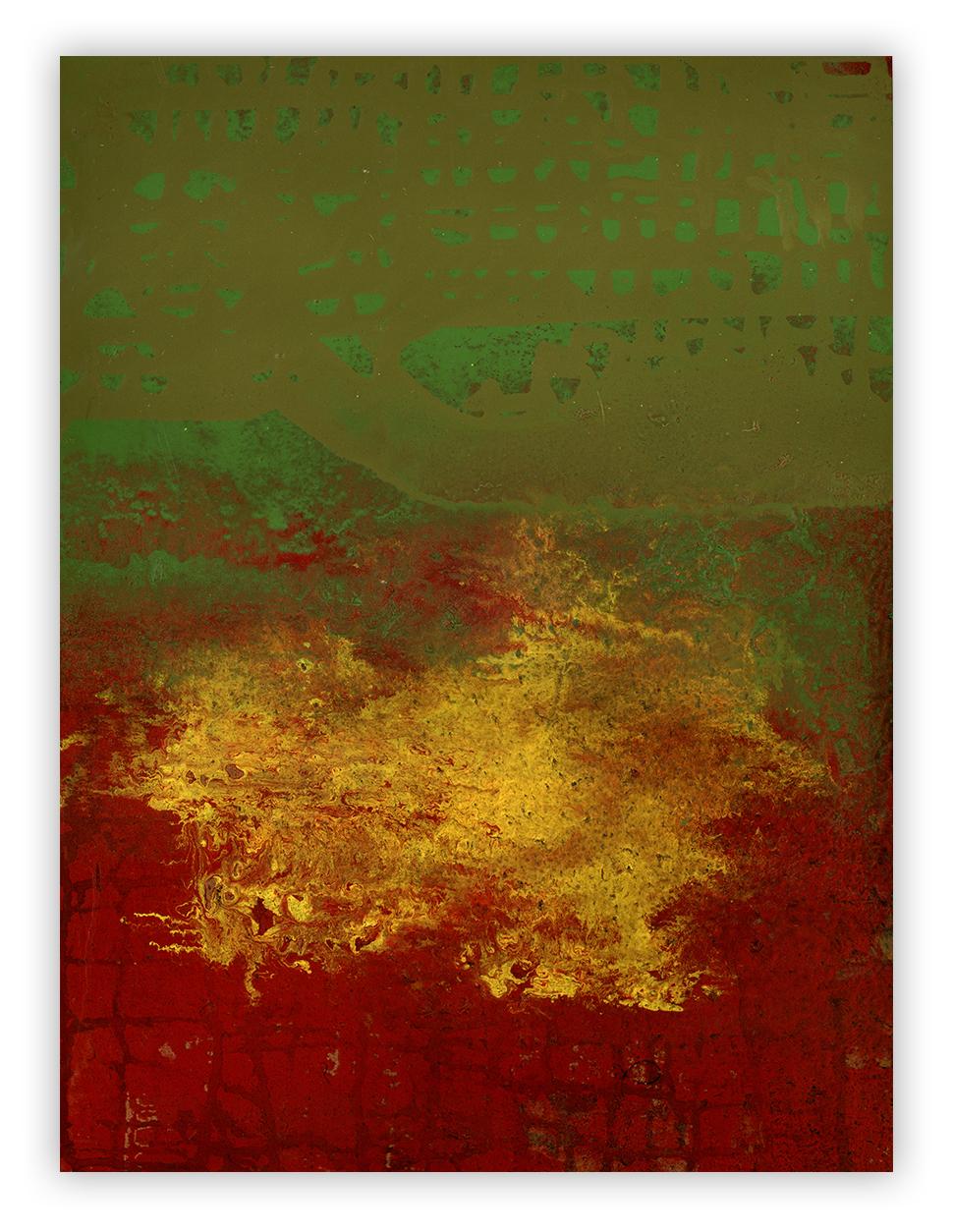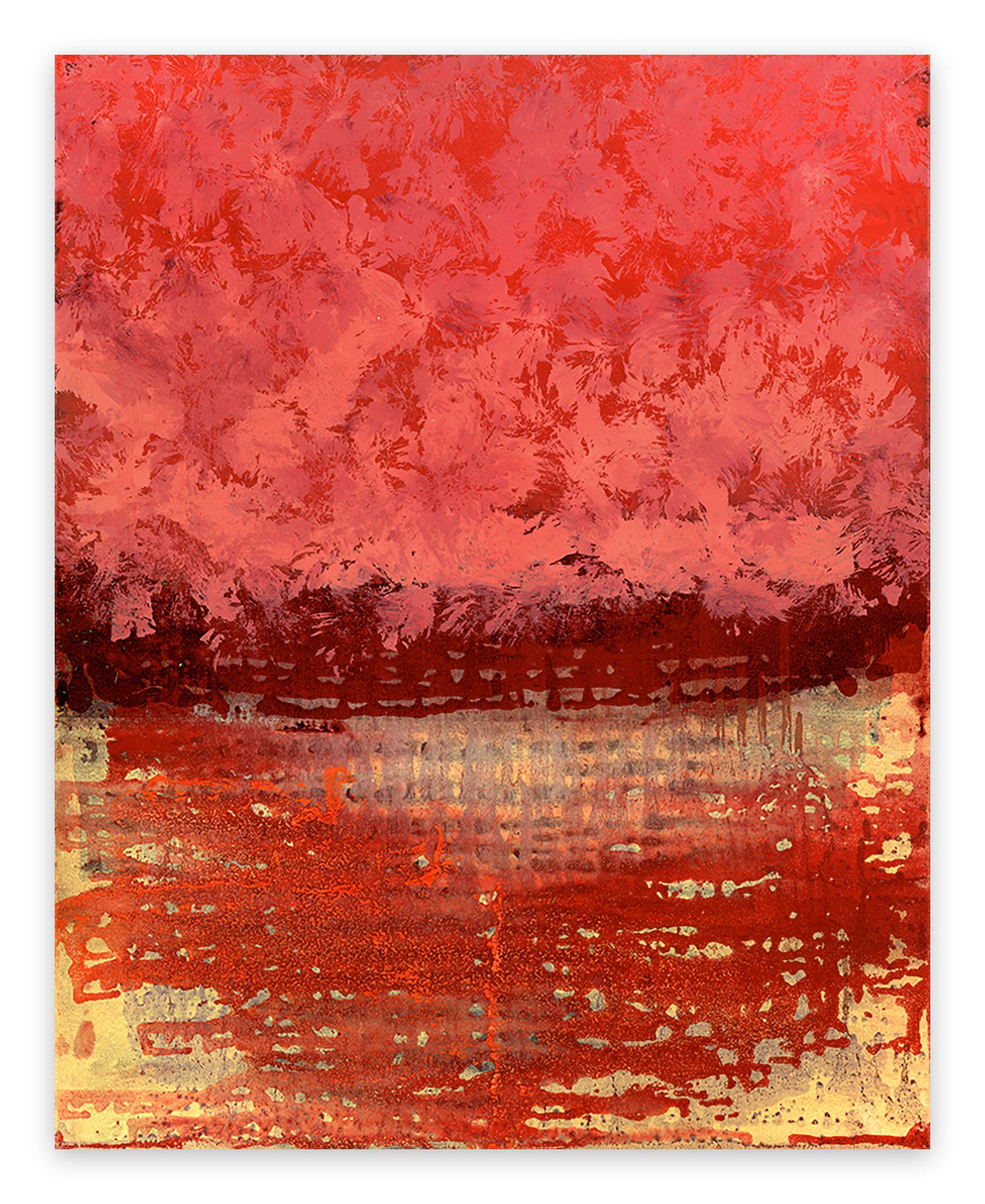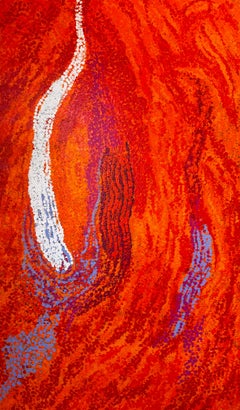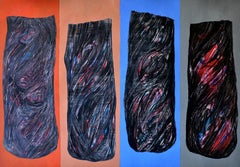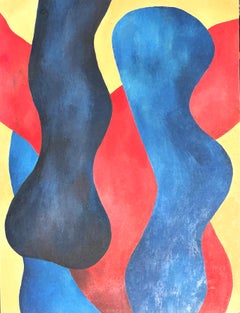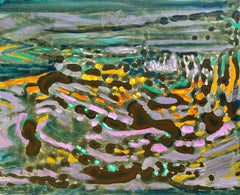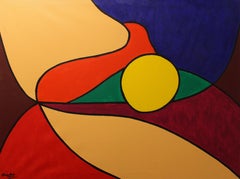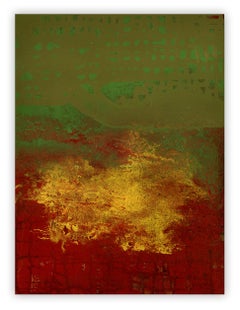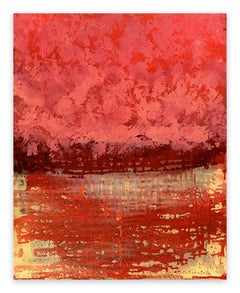Items Similar to Pikarli - My Country
Want more images or videos?
Request additional images or videos from the seller
1 of 8
Yannima Tommy WatsonPikarli - My Country2011
2011
$55,000
£41,672.93
€47,816.39
CA$77,393.88
A$85,077.16
CHF 44,712.65
MX$1,033,146.63
NOK 557,779.13
SEK 528,456.50
DKK 356,865.79
About the Item
Yannima Tommy Watson is a Pitjantjatjara artist born around the 1930s, in the bush some 44km west of the small isolated community of Irrunytju. Not yet very well known to the French public, despite his participation in the architectural project of the Musée du Quai Branly, Tommy Watson is nevertheless often considered the greatest living Aboriginal artist.
Like many aborigines of his generation, he lived a traditional, nomadic or semi-nomadic life before his contact with Western civilization; then he will occupy the only jobs that the Aborigines find: herdsmen (until Yuendumu), laborers for the construction of infrastructures in the desert. Throughout this period he became familiar with his "country", a harsh region, and deepened his knowledge, both profane and sacred, relating to Dreams and Dreamtimes, to the connections between sacred sites and the Ancestors. He will even work in Papunya, where the artistic movement started. But the Pijantjarra are intransigent with tradition…no question at this time of revealing the motives and the secret stories.
The North of South Australia, the region where he is from, was touched by the pictorial movement only at the very beginning of the 2000s. In 2001, Tommy began his career as an artist in Irrunytju (Wingellina). He is a young artist… He learns by observing other painters and draws on the experiences of a long life and on the exceptional knowledge he has stored up. But quickly he will find his way, a radically new style where color plays a major role. Very quickly, the iconography now well known by the artists of Yuendumu, or the Western Desert, Balgo or Lajamanu disappeared. The symbols are no longer there. As Rover Thomas, Emily Kame or Paddy Bedford had done before him, this is a real artistic revolution. For Tommy, it is not a question of describing his Dream (Caterpillar), the routes taken by the Ancestors. He concentrates on a site, a story, sometimes very profane, the memory of a meeting, of a hunting party, tries to condense his memories, the information of which he is the depositary, to add a poetic touch to it, sometimes melancholy, and this gives a painting with a very abstract aspect. It is a painting where the emotion is very present, undoubtedly less cerebral than the art of the neighbors of the north the Pintupi, like Ronnie Tjampitjinpa, George Tjungurrayi,… The success is very fast.
Of course what distinguishes his work is the color, very little present in the Western Desert. The red, that of the initiates' headbands, which Tommy often wears, brings a very warm note to his compositions. Yellow, blue, orange and white, sometimes purple mauves come to mark the space, create zones and reinforce the luminosity. It is undoubtedly this mix of purity and bright colors that has led art critics to compare him to Rothko or Kandinski. The technique is also special. It can be compared to the paintings of Pintupi women (Wintjiya Napaltjarri for example). The dots, quite wide with Tommy, are deposited in thick layers, which sometimes, in the best works, touch to form a flat surface very rich in matter. But Tommy goes further, because by adding his colorful and luminous touch, he manages to transcend the traditional style of Aboriginal painters to switch to contemporary art.
Two books are devoted to him, a film is planned which will retrace his incredible human and artistic adventure. In 2007, one of his paintings (Waltitjatta) sold for 240,000 AUD (almost €150,000).
For Tommy, around 2015, it's the end, his last exhibition ended (Kutju Wara, the last one) "I'm tired. I am an old man,” he said. “I've done it many times and I'm getting old. ". He died in 2017.
Comes with working photos.
- Creator:Yannima Tommy Watson (1935, Australian)
- Creation Year:2011
- Dimensions:Height: 70.87 in (180 cm)Width: 47.25 in (120 cm)
- Medium:
- Movement & Style:
- Period:
- Condition:
- Gallery Location:Miami, FL
- Reference Number:1stDibs: LU13614585722
About the Seller
5.0
Vetted Professional Seller
Every seller passes strict standards for authenticity and reliability
Established in 2011
1stDibs seller since 2012
75 sales on 1stDibs
Typical response time: <1 hour
- ShippingRetrieving quote...Shipping from: Alice Springs, Australia
- Return Policy
Authenticity Guarantee
In the unlikely event there’s an issue with an item’s authenticity, contact us within 1 year for a full refund. DetailsMoney-Back Guarantee
If your item is not as described, is damaged in transit, or does not arrive, contact us within 7 days for a full refund. Details24-Hour Cancellation
You have a 24-hour grace period in which to reconsider your purchase, with no questions asked.Vetted Professional Sellers
Our world-class sellers must adhere to strict standards for service and quality, maintaining the integrity of our listings.Price-Match Guarantee
If you find that a seller listed the same item for a lower price elsewhere, we’ll match it.Trusted Global Delivery
Our best-in-class carrier network provides specialized shipping options worldwide, including custom delivery.More From This Seller
View AllNgayuku Kgura (My Country)
By Yannima Tommy Watson
Located in Miami, FL
Yannima Tommy Watson is a Pitjantjatjara artist born around the 1930s, in the bush some 44km west of the small isolated community of Irrunytju. Not yet very well known to the French public, despite his participation in the architectural project of the Musée du Quai Branly, Tommy Watson is nevertheless often considered the greatest living Aboriginal artist.
Like many aborigines of his generation, he lived a traditional, nomadic or semi-nomadic life before his contact with Western civilization; then he will occupy the only jobs that the Aborigines find: herdsmen (until Yuendumu), laborers for the construction of infrastructures in the desert. Throughout this period he became familiar with his "country", a harsh region, and deepened his knowledge, both profane and sacred, relating to Dreams and Dreamtimes, to the connections between sacred sites and the Ancestors. He will even work in Papunya, where the artistic movement started. But the Pijantjarra are intransigent with tradition…no question at this time of revealing the motives and the secret stories.
The North of South Australia, the region where he is from, was touched by the pictorial movement only at the very beginning of the 2000s. In 2001, Tommy began his career as an artist in Irrunytju (Wingellina). He is a young artist… He learns by observing other painters and draws on the experiences of a long life and on the exceptional knowledge he has stored up. But quickly he will find his way, a radically new style where color plays a major role. Very quickly, the iconography now well known by the artists of Yuendumu, or the Western Desert, Balgo or Lajamanu disappeared. The symbols are no longer there. As Rover Thomas, Emily Kame or Paddy Bedford had done before him, this is a real artistic revolution. For Tommy, it is not a question of describing his Dream (Caterpillar), the routes taken by the Ancestors. He concentrates on a site, a story, sometimes very profane, the memory of a meeting, of a hunting party, tries to condense his memories, the information of which he is the depositary, to add a poetic touch to it, sometimes melancholy, and this gives a painting with a very abstract aspect. It is a painting where the emotion is very present, undoubtedly less cerebral than the art of the neighbors of the north the Pintupi, like Ronnie Tjampitjinpa, George...
Category
2010s Contemporary Abstract Paintings
Materials
Linen, Cotton Canvas, Acrylic
Untitled
By Jean Sanglar
Located in Miami, FL
Jean Sanglar was born in France in 1926. He draws with taste and talent from an early age, however, his family will only consider this a mere hobby. After studying law, he later took...
Category
Late 20th Century Neo-Expressionist Abstract Paintings
Materials
Mixed Media, Oil Pastel
Upside-down
By Jean Sanglar
Located in Miami, FL
Born in the South of France in 1926 and raised by very strict parents, Jean Sanglar was prohibited from playing with same age mates.
Truly talented, as a young boy he drew frequentl...
Category
Late 20th Century Neo-Expressionist Abstract Paintings
Materials
Oil Crayon, Oil Pastel, Pastel, Mixed Media, Oil, Acrylic
La Voie des Reliances
By Evelyne Ballestra
Located in Miami, FL
French artist Evelyne Ballestra studied painting in the South of France before moving to Switzerland where she met her mentor, Rolf Dürig, a master of the e...
Category
2010s Contemporary Landscape Paintings
Materials
Canvas, Oil
Untitled
By Jean Sanglar
Located in Miami, FL
Jean Sanglar was born in France in 1926. He draws with taste and talent from an early age, however, his family will only consider this a mere hobby. After studying law, he later took...
Category
Late 20th Century Neo-Expressionist Figurative Paintings
Materials
Mixed Media
Revival
By Jean Sanglar
Located in Miami, FL
Born in the South of France in 1926 and raised by very strict parents, Jean Sanglar was prohibited from playing with same age mates.
Truly talented, as a young boy he drew frequentl...
Category
Late 20th Century Neo-Expressionist Abstract Paintings
Materials
Oil Crayon, Oil Pastel, Pastel, Mixed Media, Oil, Acrylic
You May Also Like
Abstract Oil Painting
By Toma Yovanovich
Located in Buffalo, NY
An original mid-century modern abstract expressionist painting by American artist Toma Yovanovich.
Toma Yovanovich (1931-2016)
Yovanovich was a painter/printmaker whose work is i...
Category
1960s Abstract Expressionist Abstract Paintings
Materials
Canvas, Oil
$680 Sale Price
20% Off
FIRMAMENTO, Painting, Acrylic on Canvas
By Jose Maria Palacin Calvo
Located in Yardley, PA
ACRYLIC PAINTING IN WOODEN FRAME, ON SUPPORT OF FABRIC. IS PROVIDED WITH A VARNISH LAYER TO SAVE FROM DUST AND DIRT :: Painting :: Abstract :: This piece comes with an official ce...
Category
2010s Abstract Abstract Paintings
Materials
Acrylic
Verse L (Abstract painting)
By Yari Ostovany
Located in London, GB
Verse L (Abstract painting)
Oil on paper — Unframed
Informed by a variety of different cultures, Ostovany feels a connection to multiple separate and yet complementary mystical trad...
Category
2010s Abstract Abstract Paintings
Materials
Paper, Oil
Chelleneshin 51 (Abstract Painting)
By Yari Ostovany
Located in London, GB
Chelleneshin 51 (Abstract Painting)
Oil on canvas - Unframed
Informed by a variety of different cultures, Ostovany feels a connection to multiple separate and yet complementary mys...
Category
2010s Abstract Abstract Paintings
Materials
Canvas, Oil
Chelleneshin 51 (Abstract Painting)
By Yari Ostovany
Located in London, GB
Chelleneshin 51 (Abstract Painting)
Oil on canvas - Unframed
Informed by a variety of different cultures, Ostovany feels a connection to multiple separate and yet complementary mys...
Category
2010s Abstract Abstract Paintings
Materials
Canvas, Oil
Free Like a Bird, Painting, Acrylic on Canvas
By Pinar Akbaba
Located in Yardley, PA
Life is a road that we get lost sometimes. While walking in this road, we face with rules that we have to obey. Rules for what, for whom? Have to obey them? Better to build our own r...
Category
2010s Abstract Abstract Paintings
Materials
Acrylic
